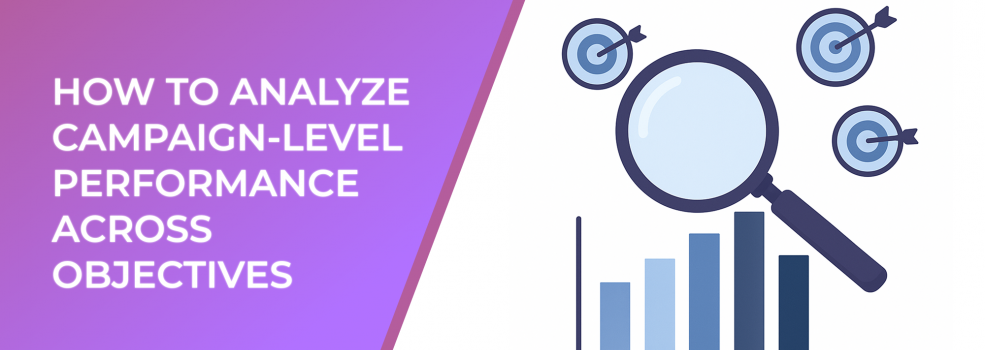When running Facebook ads, many marketers focus too narrowly on individual ads or ad sets. While those are important, campaign-level performance analysis is where the bigger strategic insights are found. By analyzing results across objectives, you can understand how well your campaigns align with business goals, which channels deliver the best ROI, and where to optimize further.
Why Campaign-Level Analysis Matters
Campaign-level analysis is about the bigger picture. Instead of only tracking clicks, impressions, or likes, you can measure which objectives actually drive outcomes. For instance:
-
A brand awareness campaign might deliver a high reach but low conversion rates.
-
A conversion-focused campaign might have fewer impressions but higher ROAS (Return on Ad Spend).
According to industry benchmarks, campaigns optimized for conversions see 2.5x higher ROI compared to traffic-focused campaigns. Analyzing at the campaign level ensures you can balance awareness, engagement, and conversion for a sustainable growth strategy.
Key Metrics to Track
Snapshot of essential Facebook ad campaign-level metrics to track across objectives—impressions, CTR, ROAS, CPA, and frequency
When evaluating Facebook ad performance at the campaign level, prioritize metrics that align with objectives:
-
Cost per Conversion (CPA): Essential for campaigns focused on purchases or sign-ups.
-
Click-Through Rate (CTR): Indicates how compelling your ad is in awareness and traffic campaigns.
-
Return on Ad Spend (ROAS): Directly tied to revenue impact.
-
Frequency: Helps monitor ad fatigue that can harm performance.
A study of Facebook campaigns found that businesses maintaining a frequency between 2 and 3 impressions per user achieved the highest engagement without overspending.
Steps for Effective Analysis
-
Segment by Objective: Always compare campaigns with similar goals. A video views campaign and a conversion campaign serve different purposes.
-
Look at Overlaps: Sometimes awareness campaigns fuel conversion campaigns. Analyze how upper-funnel ads impact lower-funnel results.
-
Track Audience Behavior: Use Facebook audience insights to see which segments respond differently across objectives.
-
Monitor Budget Allocation: Campaigns with strong ROAS deserve increased investment, while underperforming campaigns should be restructured.
Common Mistakes to Avoid
-
Comparing unrelated objectives: Evaluating a traffic campaign against a sales campaign directly is misleading.
-
Ignoring attribution windows: A 7-day click attribution may reveal more conversions than a 1-day setting.
-
Relying only on vanity metrics: Metrics like likes or impressions don’t always reflect revenue impact.
Useful Tools for Analysis
Benchmarks for Facebook ads: average CTR, Conversion Rate, and CPC across key industries to help calibrate campaign performance
-
Ads Manager Reporting: Customize columns to view campaign-level performance by objective.
-
A/B Testing: Test campaign structures with different objectives to identify which funnel strategy works best.
-
Breakdown by Placement: Discover if ads perform better on Facebook feed, Instagram stories, or Audience Network.
Suggested Reading
If you found this helpful, you may also like these related articles on LeadEnforce:
-
Why Audience Research Is the Most Overlooked Step in Facebook Ads
-
Facebook Ad Strategies That Work for Subscription Box Brands
By focusing on campaign-level analysis across objectives, you’ll gain clarity on the true performance of your Facebook ads. This approach not only improves targeting and budget allocation but also ensures that every campaign contributes meaningfully to your overall marketing strategy.

